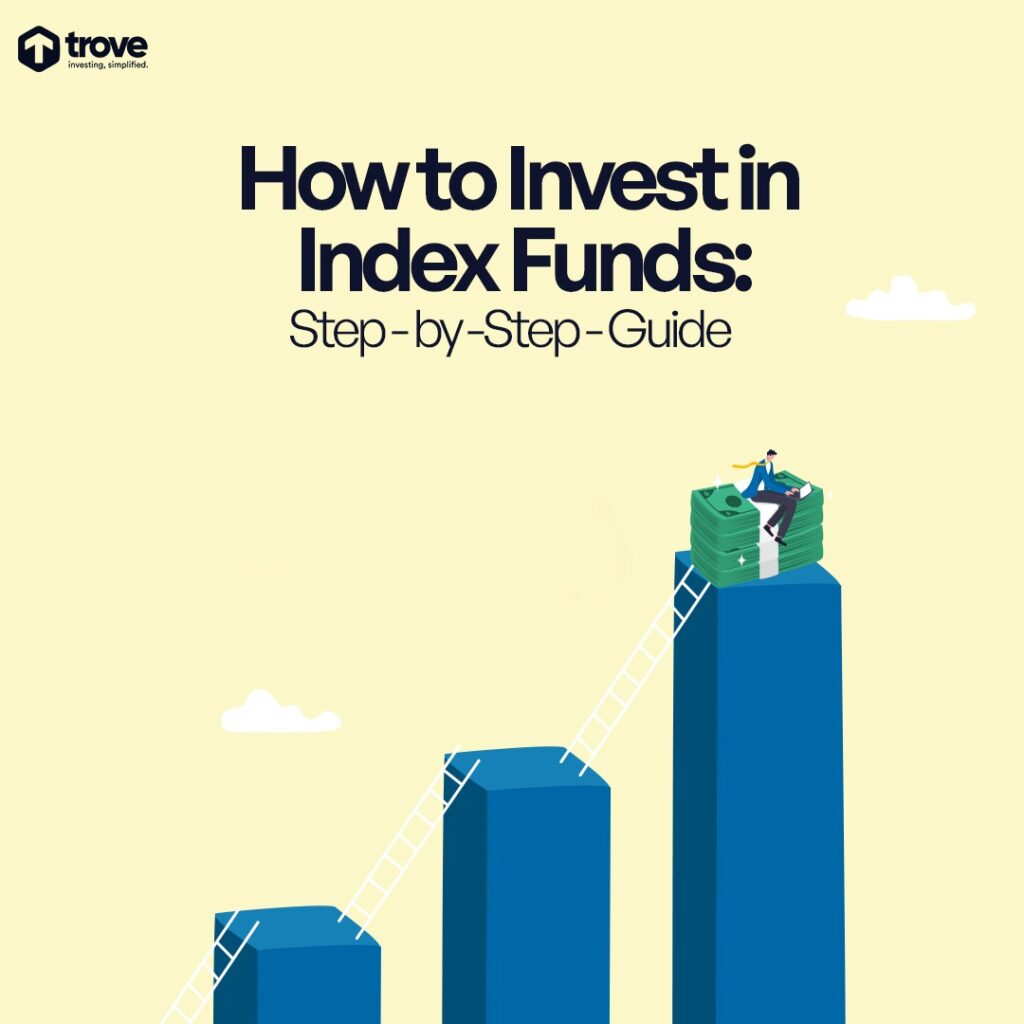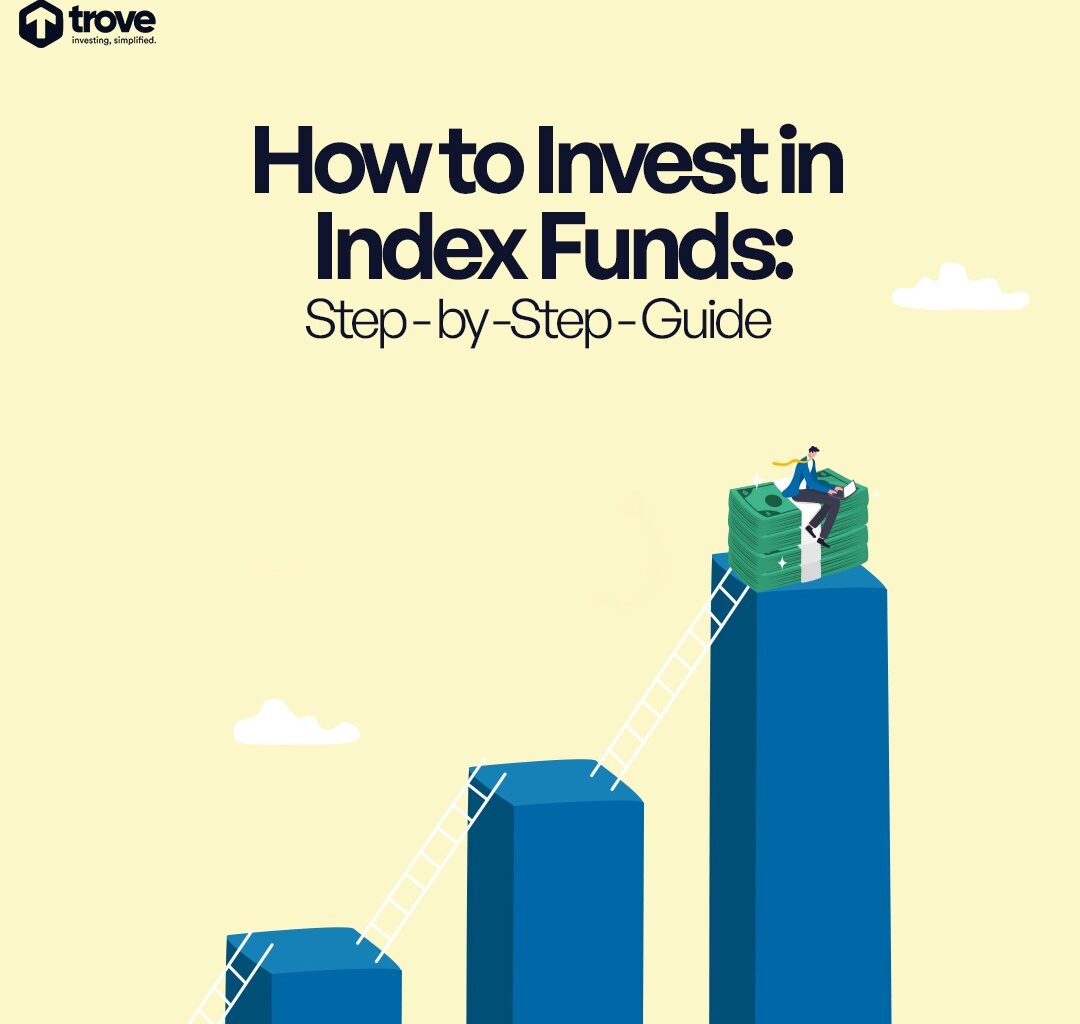Investing in index funds is a smart and effective way to build wealth over time. It offers a diversified investment portfolio with low fees, making it an attractive option for both beginner and experienced investors.
In this post, I will walk you through the basics of index funds, how to set your investment goals, select the right funds, and manage your investments for long-term success.

What is an Index Fund?
Index fund is a portfolio of stocks designed to mimic the overall performance of any financial market index, such as the S&P 500.
By investing in an index fund, you essentially invest in all the companies that make up that index, providing broad market exposure and reducing individual stock risk.
How Index Funds Work
Index funds replicate the holdings of their target index, meaning they buy and hold all or a representative sample of the securities in the index. This passive management approach keeps costs low and ensures that the fund’s performance closely mirrors the index it tracks.
The index fund does not try to beat the market, but instead it aim to match the market’s performance, making them a popular choice for long-term investors
Types of Index Funds
1. International Index Funds
This is an index fund that attempts to track the measured performance of an international market index. In other words, it tracks the global markets outside your home country.
Examples of this index fund include:
- Vanguard Total International Stock Index Fund Admiral Shares (VTIAX): Tracks the returns measured by the FTSE Global All Cap ex U.S. Index and comes with a minimum investment requirement of $3,000.
- Vanguard Developed Markets Index Fund Admiral Shares (VTMGX): Tracks the performance of the benchmark Spliced Developed ex-U.S. Index, which measures the investment return of stocks issued by companies located in Canada and the major markets of Europe and the Pacific region.
- Schwab International Index Fund (SWISX): This tracks the measured return of the MSCI EAFE Index (an index that measures the performance of large- and mid-cap companies across 21 developed markets countries around the world).
2. Sector Index Funds
This focuses on specific industry sectors, such as technology or healthcare. So, if you have a specific view of a certain area of the economy, sector-based index funds are going to be a great fit for your portfolio.
Here are some examples of sector-based index funds:
- The Consumer Discretionary Select Sector SPDR Fund (XLY) – Tracks the performance of companies involved in various areas of retail, hospitality and leisure, apparel and luxury goods, and more.
- Vanguard Communication Services Index Fund (VOX) – Tracks the performance of an index that tracks the returns of companies in the telecommunications sector.
How to invest in Index Funds

1. Set your Investment Goals
- Identify your Personal Financial Goals
Before investing in index funds, it’s crucial to identify your financial goals. Are you saving for retirement, a down payment on a house, or your child’s education? Clear goals will help you determine the appropriate investment strategy and time horizon.
- Determining your Risk Tolerance
Risk tolerance refers to your ability to endure all the market fluctuations. Consider your comfort level with potential losses and how it aligns with your investment objectives.
- Understanding your Investment Horizon
Your investment horizon is the length of time you expect to hold your investments before needing to access the funds. A longer horizon allows you to ride out market volatility and benefit from compounding returns, while a shorter horizon requires a more conservative approach.
2. Research Index Funds
Start by identifying the index you want to track. Look for funds that closely replicate the performance of that index. Pay attention to the fund’s historical performance, management style, and underlying holdings.
Key Factors to Consider
- Expense Ratio: The annual fee charged by the fund, expressed as a percentage of your investment. Lower expense ratios are preferable as they reduce costs and increase net returns.
- Performance: Review the fund’s past performance, but remember that past performance is not indicative of future results.
- Fund Size: Larger funds tend to be more stable and less susceptible to large price swings due to their diversified holdings.
3. Choose an Investment Platform
You can invest in index funds through various platforms, including traditional brokerages, robo-advisors, and direct purchases from mutual fund companies.
Each platform has its advantages and drawbacks. So, choose a platform that aligns with your investment style and goals. Traditional brokerages offer a wide range of investment options and tools but may charge higher fees. Robo-advisors provide automated, low-cost portfolio management tailored to your risk tolerance and goals.
Once you’ve chosen a platform and you have decided on the index fun fund to invest in, you can then set up an account.

Top Index Funds to Invest in 2024
1. Vanguard 500 Index Fund (VFIAX)
- Tracks the S&P 500
- Low expense ratio
- A long history of strong performance
2. Schwab S&P 500 Index Fund (SWPPX)
- Tracks the S&P 500
- Low cost
- No minimum investment
3. Fidelity ZERO Total Market Index Fund (FZROX)
- Tracks the total U.S. stock market
- No expense ratio
- Ideal for broad market exposure
4. iShares Core S&P 500 ETF (IVV)
- Tracks the S&P 500
- Low expense ratio
- High liquidity
5. Vanguard Total Stock Market Index Fund (VTSAX)
- Tracks the entire U.S. stock market
- Low cost
- Broad diversification
Pros and Cons of Index Funds
Pros
- Low Costs:
- Expense Ratios: Index funds typically have lower expense ratios compared to actively managed funds. This is because they don’t require a team of analysts and managers making investment decisions.
- Transaction Fees: Since index funds have low turnover rates (buying and selling of assets), they incur fewer transaction fees.
- Diversification:
- Broad Market Exposure: By investing in an index fund, you get exposure to a wide range of securities within a particular index, spreading risk across many assets.
- Risk Reduction: Diversification helps mitigate the impact of poor performance of any single security on your overall portfolio.
- Simplicity:
- Ease of Understanding: Index funds track a specific index, making it straightforward to understand their performance and strategy.
- Set-and-Forget Approach: Suitable for investors who prefer a hands-off approach, as these funds require minimal monitoring and decision-making.
- Performance:
- Market Returns: Index funds aim to match the performance of the market index they track, which often results in consistent, reliable returns over the long term.
- Beating Active Management: Many actively managed funds fail to outperform their benchmark indices over time, making index funds a competitive option.
- Tax Efficiency:
- Lower Capital Gains: Due to lower turnover rates, index funds generate fewer taxable events compared to actively managed funds, which can result in lower capital gains taxes.
Cons
- Lack of Flexibility:
- No Active Management: Index funds cannot adjust their holdings to avoid market downturns or capitalize on specific opportunities, as they strictly follow the index.
- Limited Innovation: They cannot benefit from potentially lucrative, innovative investment strategies that active managers might employ.
- Average Returns:
- Market Matching: While index funds typically match market performance, they will not outperform the market. Investors looking for above-market returns might find this limiting.
- No Outperformance: During periods when active managers excel, index fund investors may miss out on potential excess returns.
- Market Risk:
- Systematic Risk: Index funds are subject to market risk, meaning if the overall market or index performs poorly, the index fund will also perform poorly.
- No Downside Protection: Index funds do not have mechanisms to protect against market declines.
- Limited Choice:
- Fixed Holdings: Investors cannot pick and choose individual securities within an index fund, which might not align perfectly with their specific investment preferences or ethical considerations.
Read: Stocks vs Mutual Funds: Pros and Cons
FAQs
What is the Minimum Amount Needed to Start Investing in Index Funds?
Many index funds have low minimum investment requirements, often as low as $100 or even lower for some ETFs.
Are Index Funds a Good Investment for Beginners?
Yes, index funds are an excellent choice for beginners due to its low costs, diversification, and ease of management.
Conclusion
Investing in index funds is a powerful way to grow your wealth and achieve your financial goals. By understanding the basics of index funds, setting clear investment objectives, and following a disciplined approach, you can build a diversified portfolio that stands the test of time.







